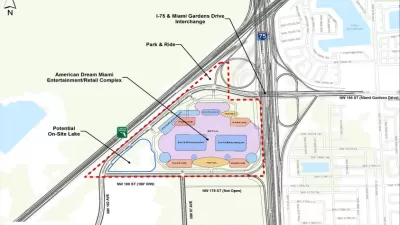Asia's mega-malls have been booming for over a decade, many built atop former park space, and now are suffering from high vacancy rates and low consumer spending.
"In modern economics, a developing country’s middle class is defined by its ability to consume at levels at or near those of the US, Japan, or Europe. Asia’s new malls are bubbles of modernity, built on vast scales as symbols of this growing class. They are meeting spaces, glossy, air-conditioned indoor parks, where you can ignore the air pollution, poverty, and heat of the real world," explains Nithin Coca.
"These malls have been built on what were once parks. As recently as 1983, the city still had 35% of its land in open, green areas. Today, according to Green Map Jakarta, that number has dropped to an astounding 6%, one of the lowest in the world. "
"When Jakartans go for a walk, they have few options beside the malls. Sidewalks are non-existent, overtaken by motorcycles or vendors, the parks are gone, and getting in and out of the city to the countryside a nightmare. As the urban heat effect and lack of trees make Jakarta both hotter and drier, the malls become a refuge of air-conditioning (from reliable, generator-sourced electricity) for a population increasingly more accustomed to living in a climate-controlled world."
Coca describes the macroeconomic takeaway of Asia's faltering mall boom this way: "The reality that malls and consumerism only cater to a small percentage of the population is becoming more and more apparent. Remember—Asia’s economic growth was built on manufacturing and natural resources. It’s the transition to an American-style consumer economy that is faltering, perhaps because that mode—built in an era of cheap oil and plentiful space—is untenable in today’s world."
FULL STORY: Asia’s mega-mall boom is headed toward bust

Alabama: Trump Terminates Settlements for Black Communities Harmed By Raw Sewage
Trump deemed the landmark civil rights agreement “illegal DEI and environmental justice policy.”

Study: Maui’s Plan to Convert Vacation Rentals to Long-Term Housing Could Cause Nearly $1 Billion Economic Loss
The plan would reduce visitor accommodation by 25% resulting in 1,900 jobs lost.

Why Should We Subsidize Public Transportation?
Many public transit agencies face financial stress due to rising costs, declining fare revenue, and declining subsidies. Transit advocates must provide a strong business case for increasing public transit funding.

Paris Bike Boom Leads to Steep Drop in Air Pollution
The French city’s air quality has improved dramatically in the past 20 years, coinciding with a growth in cycling.

Why Housing Costs More to Build in California Than in Texas
Hard costs like labor and materials combined with ‘soft’ costs such as permitting make building in the San Francisco Bay Area almost three times as costly as in Texas cities.

San Diego County Sees a Rise in Urban Coyotes
San Diego County experiences a rise in urban coyotes, as sightings become prevalent throughout its urban neighbourhoods and surrounding areas.
Urban Design for Planners 1: Software Tools
This six-course series explores essential urban design concepts using open source software and equips planners with the tools they need to participate fully in the urban design process.
Planning for Universal Design
Learn the tools for implementing Universal Design in planning regulations.
Smith Gee Studio
Alamo Area Metropolitan Planning Organization
City of Santa Clarita
Institute for Housing and Urban Development Studies (IHS)
City of Grandview
Harvard GSD Executive Education
Toledo-Lucas County Plan Commissions
Salt Lake City
NYU Wagner Graduate School of Public Service



























